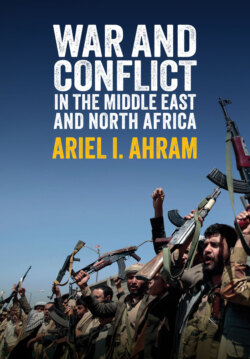Читать книгу War and Conflict in the Middle East and North Africa - Ariel I. Ahram - Страница 18
Conclusion
ОглавлениеCounting armed conflicts, battle deaths, and indirect deaths is frustratingly inexact. The exercise depends on disputed concepts that, in turn, link to deeper normative concerns about what types of violence are legitimate versus illegitimate. Terms like “soldier,” “terrorist,” “civilian,” “victim,” or “casualty” connote different statuses within organizations devoted to fighting. Even if these theoretical and moral issues are resolved, the techniques used to collect data about war themselves face severe practical limitations.
Nevertheless, grappling with these conceptual, normative, and methodological issues, however contingently, is essential for elucidating patterns and trends and to define the field of inquiry for war and conflict in MENA. The data show several notable things. When viewed over the duration of the post-World War II era, the patterns of conflict in MENA are mostly unexceptional. MENA largely tracked with global trends in the frequency and form of war. War became rarer in MENA at roughly the same time as it became rare globally. War became more prevalent in MENA when it became more prevalent globally. The epidemic of internal wars in MENA roughly coincided with the global turn toward internal wars. As in other regions, war is not evenly distributed within MENA itself. Some countries, like Israel and Iraq, have experienced nearly perpetual war. Other countries in the region have seen only sporadic warfare. This suggests a need to consider the issue of war from both a global system and regional sub-system perspective.
In terms of magnitude of conflict, the data are far grimmer. For much of the second half of the twentieth century, it was wars in eastern Asia that claimed the most lives. However, since the turn of the twenty-first century, conflicts in MENA have been proliferating and intensifying. Most of the recent violence in MENA is broadly attributable to episodes of internal (civil) war and state failure. Yet states in many ways remain at the fulcrum of violence. The next chapter explores how contestation over statehood generates different forms of violence.
